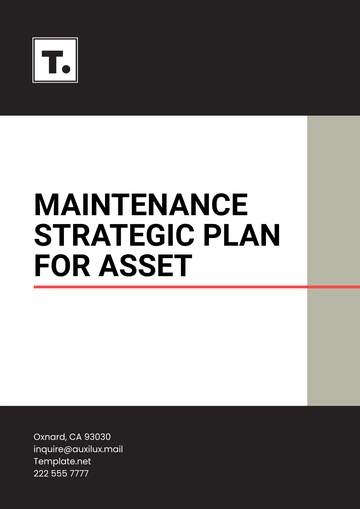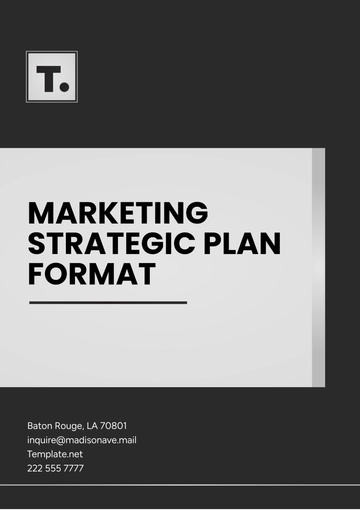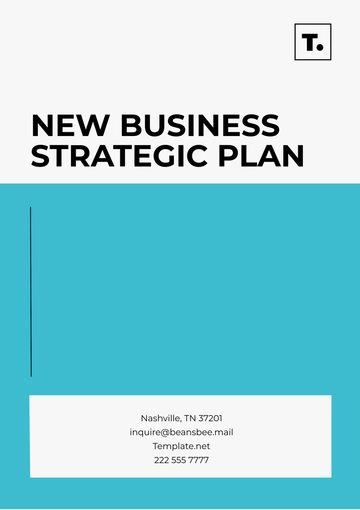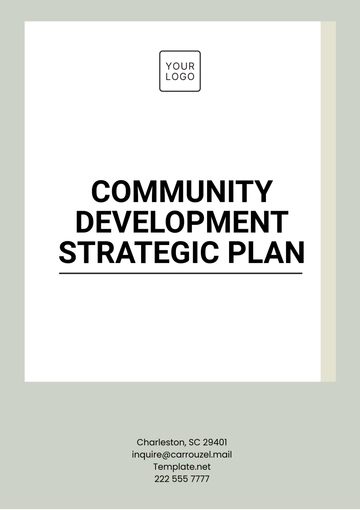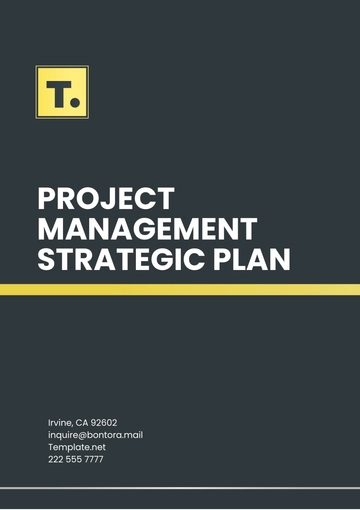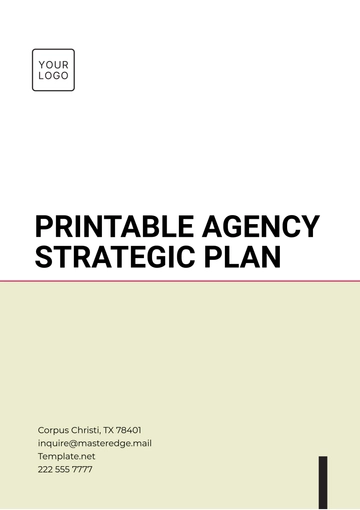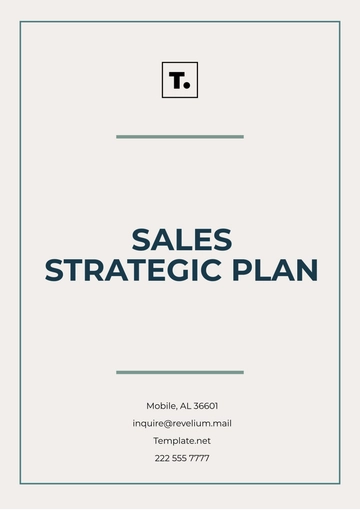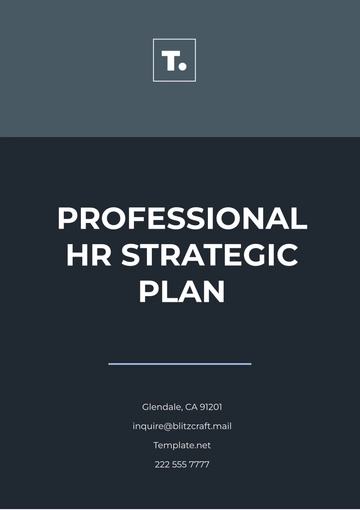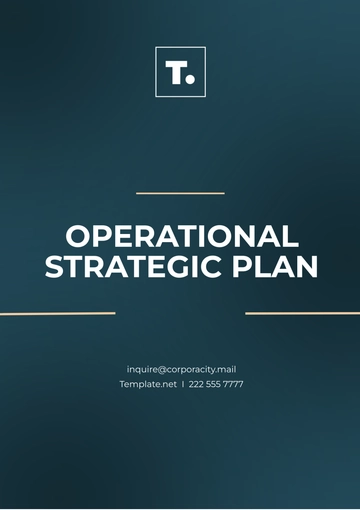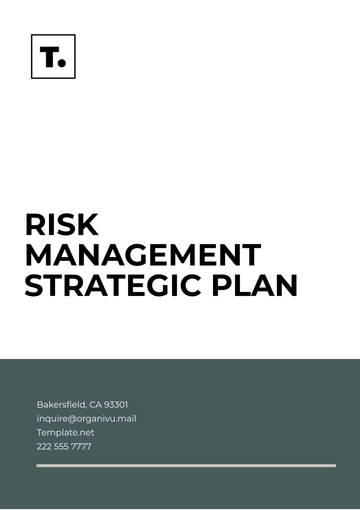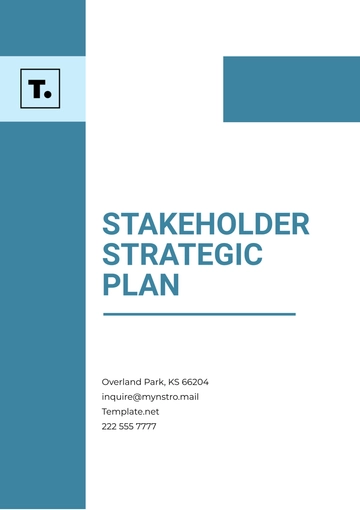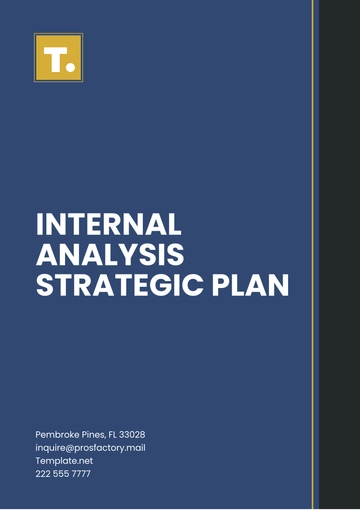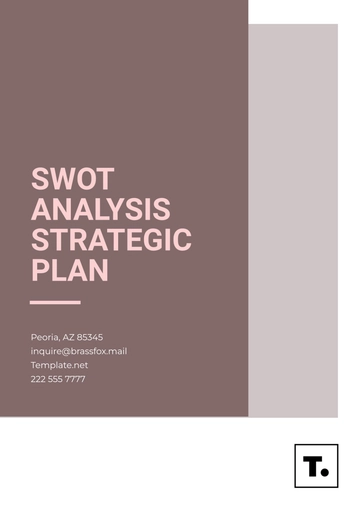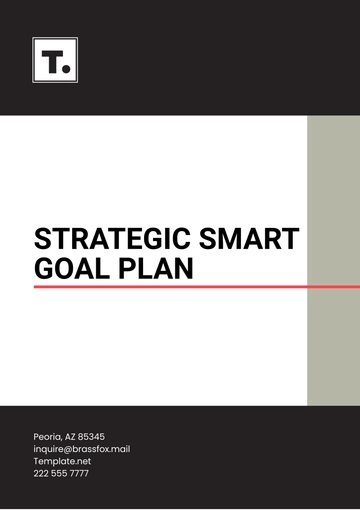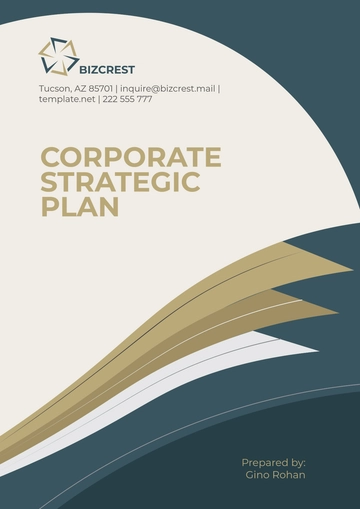Free Internal Audit Strategic Plan
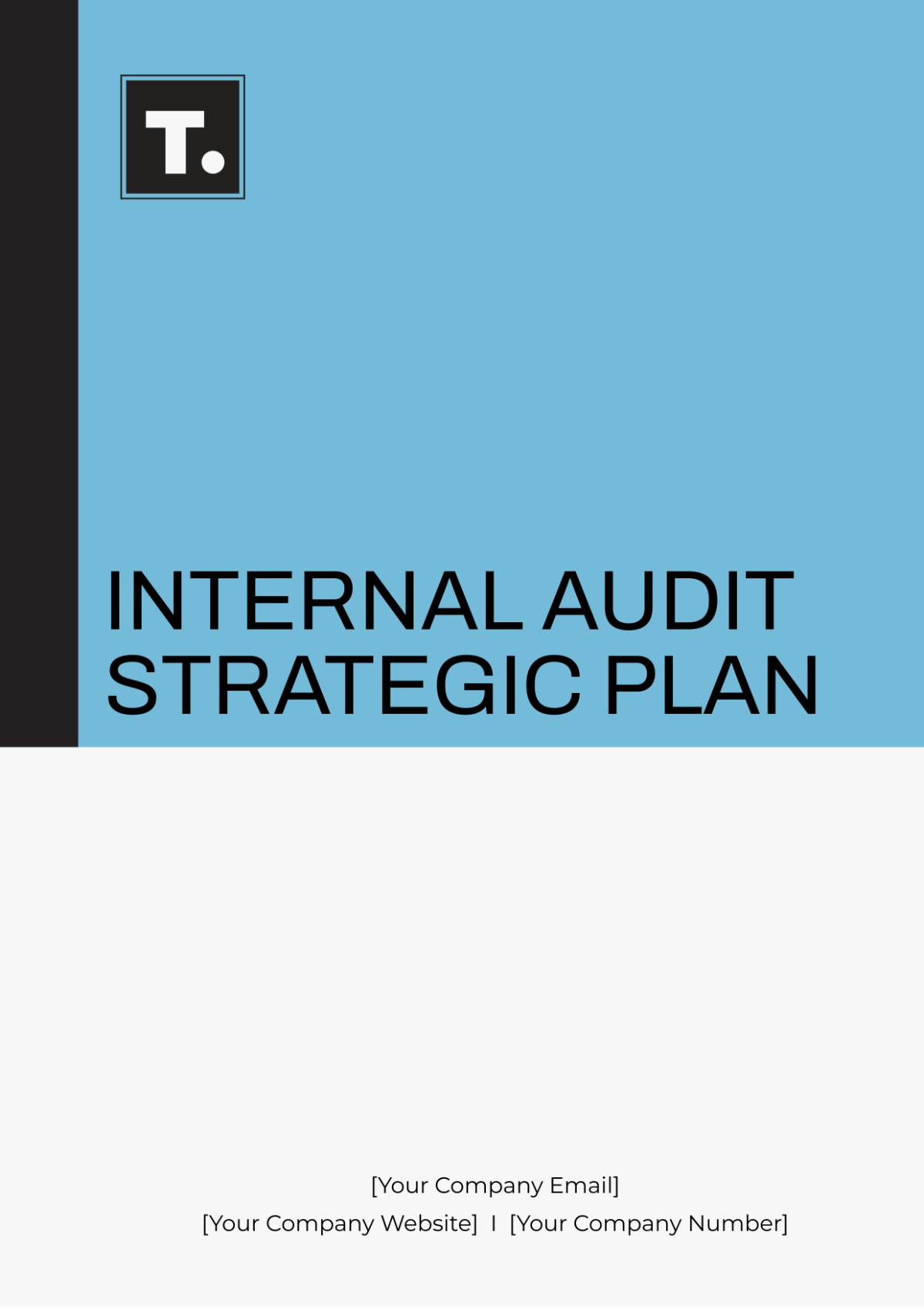
Company: | Department: | Prepared by: | Date: |
|---|---|---|---|
[YOUR COMPANY NAME] | [YOUR DEPARTMENT] | [YOUR NAME] | [DATE] |
I. Executive Summary
This Internal Audit Strategic Plan provides a concise overview of the plan's key objectives and strategies. It highlights the plan's alignment with the organization's goals and its focus on enhancing risk management, compliance, operational efficiency, financial reporting integrity, and fraud prevention.
II. Introduction
A. Background
[YOUR COMPANY NAME] is committed to maintaining the highest standards of integrity, transparency, and accountability in its operations. The Internal Audit function plays a crucial role in achieving these objectives by providing independent and objective evaluations of the organization's operations, financial reporting, and compliance with laws and regulations.
B. Purpose
The purpose of this Internal Audit Strategic Plan is to outline our approach to conducting internal audits over the next three years. By aligning our audit activities with the organization's goals and risks, we aim to enhance risk management processes, strengthen compliance efforts, improve operational efficiency, enhance financial reporting integrity, and foster fraud prevention measures.
III. Internal Audit Mission and Vision
A. Mission Statement
[YOUR COMPANY NAME] Internal Audit's mission is to provide independent, objective assurance and consulting services designed to add value and improve the organization's operations. We are committed to helping the organization achieve its objectives by systematically evaluating and improving the effectiveness of risk management, control, and governance processes.
B. Vision Statement
Our vision is to be recognized as a trusted advisor and strategic partner to management and the board of directors in achieving the organization's objectives. We aspire to be a proactive, agile, and innovative internal audit function that adds measurable value to the organization.
IV. Internal Audit Strategic Objectives
A. Objective 1: Enhance Risk Management Processes
Develop a comprehensive risk assessment methodology to identify and prioritize key risks to the organization.
Implement risk-based audit planning and allocate resources based on identified risks.
Provide recommendations to management for mitigating identified risks and enhancing risk management processes.
B. Objective 2: Strengthen Compliance Efforts
Conduct compliance audits to ensure adherence to laws, regulations, and internal policies.
Enhance compliance monitoring processes and provide guidance to business units on compliance requirements.
Collaborate with legal and regulatory affairs teams to stay abreast of regulatory changes and emerging compliance risks.
C. Objective 3: Improve Operational Efficiency
Evaluate operational processes and identify opportunities for streamlining and efficiency improvements.
Implement continuous monitoring mechanisms to track operational performance and identify areas for improvement.
Provide recommendations for process optimization and automation to enhance efficiency and reduce costs.
D. Objective 4: Enhance Financial Reporting Integrity
Conduct audits of financial statements to ensure accuracy, completeness, and compliance with accounting standards.
Review internal controls over financial reporting and recommend enhancements to mitigate the risk of material misstatement.
Provide assurance on the reliability of financial information to stakeholders, including management, the board of directors, and external auditors.
E. Objective 5: Foster Fraud Prevention Measures
Develop a fraud risk assessment framework to identify and assess fraud risks across the organization.
Implement fraud detection techniques, such as data analytics and trend analysis, to proactively identify potential fraudulent activities.
Provide fraud awareness training to employees and promote a culture of integrity and ethical behavior throughout the organization.
V. Strategic Initiatives and Action Plan
A. Initiative 1: Risk Assessment and Planning
Task | Responsible Party | Timeline | Status |
|---|---|---|---|
Develop risk assessment methodology | Internal Audit | Q1-Q2 2050 | In Progress |
Identify key risks to the organization | Internal Audit | Q2-Q3 2050 | Not Started |
Prioritize risks based on impact and likelihood | Internal Audit | Q3-Q4 2050 | Not Started |
B. Initiative 2: Compliance Audits
Task | Responsible Party | Timeline | Status |
|---|---|---|---|
Conduct compliance audits | Internal Audit | Q1-Q4 2050 | In Progress |
Review compliance monitoring processes | Internal Audit | Q3-Q4 2050 | Not Started |
Provide guidance on compliance requirements | Internal Audit | Q4 2050 | Not Started |
C. Initiative 3: Process Improvement Audits
Task | Responsible Party | Timeline | Status |
|---|---|---|---|
Evaluate operational processes | Internal Audit | Q2-Q3 2050 | Not Started |
Identify opportunities for improvement | Internal Audit | Q3-Q4 2050 | Not Started |
Implement process optimization | Internal Audit | Q4 2050 | Not Started |
D. Initiative 4: Financial Reporting Audits
Task | Responsible Party | Timeline | Status |
|---|---|---|---|
Conduct audits of financial statements | Internal Audit | Q1-Q4 2050 | Not Started |
Review internal controls over financial reporting | Internal Audit | Q3- Q4 2050 | Not Started |
Provide assurance on the reliability of financial information | Internal Audit | Q4 2050 | Not Started |
E. Initiative 5: Fraud Detection and Prevention
Task | Responsible Party | Timeline | Status |
|---|---|---|---|
Develop fraud risk assessment framework | Internal Audit | Q1-Q2 2050 | Not Started |
Implement fraud detection techniques | Internal Audit | Q2-Q3 2050 | Not Started |
Provide fraud awareness training | Internal Audit | Q3-Q4 2050 | Not Started |
VI. Resource Allocation
A. Budget
The budget for the Internal Audit function for the next three years is as follows:
Year 1: $500,000
Year 2: $550,000
Year 3: $600,000
B. Staffing
Internal Audit staffing requirements for the next three years:
Year 1: 5 auditors
Year 2: 6 auditors
Year 3: 7 auditors
VII. Monitoring and Evaluation
A. Key Performance Indicators (KPIs)
Key performance indicators to measure the effectiveness of internal audit activities:
Percentage of audit recommendations implemented
Number of significant audit findings
Audit coverage of key risk areas
B. Evaluation Process
An annual evaluation process will be conducted to assess the progress of strategic initiatives and make adjustments as necessary. This process will include:
Quarterly progress reviews
Annual strategic plan review and update
VIII. Risk Management
A. Risk Identification
Risks to the successful implementation of the Internal Audit Strategic Plan include:
Resource constraints
Changes in regulatory requirements
Resistance to change from stakeholders
B. Risk Mitigation Strategies
Mitigation strategies will include:
Regular communication with stakeholders
Flexibility in resource allocation
Proactive monitoring of regulatory changes
IX. Communication and Reporting
A. Stakeholder Communication
Communication strategies will include:
Regular updates to senior management and the board of directors
Quarterly newsletters to employees
Annual reports to stakeholders
B. Reporting Mechanisms
Reporting mechanisms will include:
Formal audit reports for each audit conducted
Quarterly progress reports on strategic initiatives
Annual reports on the overall effectiveness of the internal audit function
X. Conclusion
In conclusion, the Internal Audit Strategic Plan outlines our commitment to providing independent and objective assurance to the organization. By focusing on key strategic objectives and initiatives, we aim to enhance risk management processes, strengthen compliance efforts, improve operational efficiency, enhance financial reporting integrity, and foster fraud prevention measures. Through effective resource allocation, monitoring, and evaluation, we are confident in our ability to add value and improve the organization's operations.
- 100% Customizable, free editor
- Access 1 Million+ Templates, photo’s & graphics
- Download or share as a template
- Click and replace photos, graphics, text, backgrounds
- Resize, crop, AI write & more
- Access advanced editor
Enhance your internal audit processes with the Internal Audit Strategic Plan Template from Template.net. This template, editable in our AI Editor Tool, assists you in developing a thorough audit plan, conducting audits effectively, and implementing audit recommendations. Customizable to your organization's needs, it ensures your internal audits are comprehensive and effective.
